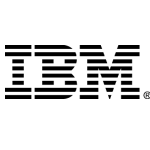Generic
End-user creates his own workplace
06/09/2017 | Written by: Think Blog Editor
Categorized: Generic
Share this post:
Mobile working and communication is crucial to many organizations. After all, employees want the employer to provide the same intuitive user experience at the office that these employees enjoy with their smartphone or tablet in their private lives. Everything has to be fast, intuitive and work with no fuss. Among the upcoming millennial’s generation, this expectation is even greater.
Moreover, the smartphone or tablet plays an ever more important role in the digitization of work processes, for example a warehouse employee who receives an order in real time from the digital web shop while (s)he is working among the shelves. This demands a different approach from the digital workplace, that must focus fully on an optimum end-user experience on the one hand and that is ready for the digital enterprise on the other hand.
Many organizations and suppliers have been promising this for a long time, but frequently have not delivered very little in practice. This is because they still use the traditional workplace as their point of departure. Laptops are full of business applications and security measures, but they are not designed around the end user. Security of company data is frequently the point of departure in place of the user himself.
One important catalyst is the emergence of Windows 10, which – following the example of the Mac environment – actually redefines the workplace. Applications are designed from the outset with ‘mobile’ features in mind.
The new workplace is thus much more dynamic than we are accustomed to. It is literally in the hands of nursing personnel in a hospital or the cabin crew on an airplane, to mention two examples. Rather than having static information on paper, employees can use tablets or other mobile devices anywhere at any time.
As IBM, we help customers with the strategy and implementation of the digital workplace of the future. A workplace that is increasing cloud-based, which makes it possible to move seamlessly between a telephone and a laptop, for example. Thanks to an advanced security environment, security does not come at the expense of ease of use.
Data and analytics offer extra support here. For example, to ensure that people can find and view the items they need on their device. Just as in the consumer world – where people in shops are served up site-related offers or services – in the work situation people can also have relevant items presented based on the business context.
Thanks to IBM’s cognitive Watson technology, people have quick access to the right information on their mobile device: data, video, audio, text, etc. Moreover, the application function gradually improves as it is used, because it includes a learning system. Over time, the information provided becomes more and more streamlined and to-the-point.
Not only are the devices and the applications completely in line with what people want; the same is true for support: users can get information via chat, blogs, forums, and in the most extreme case, by telephone. This allows people to be much more self-sufficient. Utilizing cognitive applications makes all this even better. For example, in the event of problems with a laptop, the agent can utilize the Watson application to help him or her quickly find the right solution.
The new digital workplace is further proof that IBM is right in the middle of all developments. IBM designed and developed the basic platform, but it is also linked to technologies that were already available – completely in step with the current age.
Discover IT as a Service >>>
Automate work and accelerate business growth
Many companies need help to navigate the rapid changes that define today’s business environment. To improve their responsiveness and flexibility, they are looking for new ways of conducting business, rethinking their processes, and investing in digital transformation projects to increase the robustness of their operations. They rely on business automation technologies to cut out repetitive […]
Sustainability and the technologies enabling the transition
Creating a sustainable future demands significant technological innovation to decarbonize society, restore biodiversity and ecosystem health, foster thriving oceans for sustenance and economic growth, remove atmospheric carbon, transition to sustainable agriculture, and advance eco-friendly cities that align with our vision for a better future. Generative AI has achieved much in recent years and now surpasses […]
Technology in action at Think Summit 2021
Covid 19, the energy transition and climate change require business agility… right away! Organizations that are slowly starting their digital transformation are irrevocably overtaken by competitors: companies that can quickly realize new, sustainable business models with a remote workforce. How can organizations leverage innovations such as AI, machine learning and hybrid cloud to make […]



